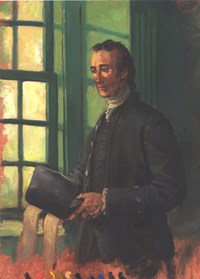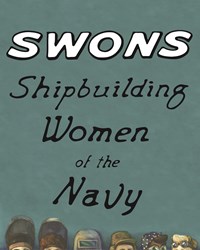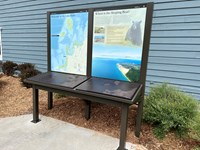- Sleeping Bear Dunes National Lakeshore (40)
- Golden Gate National Recreation Area (30)
- Reconstruction Era National Historical Park (19)
- Boston National Historical Park (18)
- Boston Harbor Islands National Recreation Area (11)
- Port Chicago Naval Magazine National Memorial (11)
- Lewis & Clark National Historic Trail (8)
- Thomas Stone National Historic Site (8)
- Cedar Creek & Belle Grove National Historical Park (7)
- Show More ...
- Geologic Resources Division (3)
- American Battlefield Protection Program (2)
- National Heritage Areas Program (2)
- National Historic Landmarks Program (2)
- National Register of Historic Places Program (2)
- Park History Program (2)
- Archeology Program (1)
- Denver Service Center (1)
- Fire Management (1)
- Show More ...
Showing 386 results for port ...
Blackwater Highways
Series: The Port Royal Experiment
- Type: Article
In the fall of 1861 after the Battle of Port Royal, the US military came ashore around Beaufort and found thousands of now formerly enslaved people in control of the region. The military had no real plan yet for what to do with these people or even their legal status. Newly freed Black South Carolinians were active participants. They demanded access to programs to support labor reforms, land redistribution, quality education, and military service.
Evolution of Agriculture at Sleeping Bear Dunes
USS Utah Memorial
- Type: Place
On December 7, 1941, Oklahoma's port (left) side was hit by eight torpedoes at the very start of the attack. In less than twelve minutes, she rolled over until her masts touched the bottom, trapping hundreds of men inside and under the water. Four hundred twenty-nine crew members died. Of those trapped inside, only 32 could be rescued.
Commodore Perry's Longboat
Thomas Stone
Port Royal State Historic Park
- Type: Place
“...the people…are moving not from choice to an unknown region not desired by them.” Elijah Hicks wrote these words to Chief John Ross while camped at Port Royal, Tennessee in October 1838. Port Royal was the last place over 10,000 Cherokees slept in Tennessee before crossing into Kentucky. They were travelling along the Great Western Road, part of the Northern Route, which ran from Nashville, Tennessee to Missouri. Visitors can walk about a 1/4 mile of that historic roadbed.
Frances Winifred Williams
Wayside: Welcome to the Platte River Campground and Sleeping Bear Dunes
Labor Reforms of the Port Royal Experiment
- Type: Article
Paying wages to the formerly enslaved people served two purposes for the government officials developing the Port Royal Experiment. It helped to provide a solution of where people should live. Wages also began to put cash into the hands of people who had toiled this land for generations. Many sought to use that cash to secure that land for themselves.
The Port Royal Experiment
Oak Ridge Wayside: Atomic City ABCs
The Legacy of the Port Royal Experiment
Military Service and the Port Royal Experiment
Education During the Port Royal Experiment
Wayside: Where is the Sleeping Bear and Welcome to Sleeping Bear Dunes
Wayside: Explore, Play, Refresh
Land Ownership: An Effect of the Port Royal Experiment
- Type: Person
Benjamin Lincoln, a major general of the Continental Army, was present at pivotal moments in the American Revolution. He oversaw the Continental Army's largest defeat when he surrendered 5,000 soldiers to the British in Charleston, South Carolina in May 1780. After being exchanged, he returned to the army and was present at the allied Franco-American victory at the Siege of Yorktown. He accepted the surrender of General Charles O'Hara's sword.




















